HIGHLIGHTS
A sneak peek
CONTEXT
InConnect, a patient's guide to better health
Innovaccer's patient app, InConnect helps patients stay informed, connected, & in control of their healthcare journey through seamless access to care & resources.
PROBLEM
Poor medication adherence leads to worse health outcomes
Patients struggle to follow medication schedules, leading to ineffective treatment and poor health outcomes. The burden of staying organized, fear of mistakes, and lack of intuitive tools make adherence even harder.
SOLUTION
Helping patients stay on track and keeping providers informed
A simple and easy-to-use medication reminder system helps patients stay on track with their medications. Each reminder is clear, personalized, and motivating to build better habits. Patients can also share their medication history with providers, giving them the information they need to make better treatment decisions.
Outcome
42%
Feature Adoption Rate (within 3 months)
37%
Increase in Daily Active Users
$ 2 million
Value contracts signed
Solo designer leading end-to-end design direction
I led the design of the medication adherence feature for InConnect. The project aimed to simplify medication management for users while bridging gaps between patients, caregivers, and healthcare providers.
PM, EM, Engineers, SMEs
Team
16 Weeks
Timeline
BACKGROUND
Scope of the problem
Managing medications with a busy life
Managing a busy life often makes it easy to forget critical tasks like taking medication. This can lead to uncertainty about missed doses and leave patients and doctors without the clarity needed for effective treatment.
Poor adherence leads to sub-optimal care
Medication adherence is a systemic issue that impacts patients, healthcare providers, and governments alike. Poor adherence leads to worsening health outcomes, incomplete data for providers, and rising healthcare costs, making it a critical challenge to address for a sustainable healthcare system.
This challenge provided the perfect business opportunity for InConnect to expand its capabilities in patient healthcare.
RESEARCH
Hearing stories of everyday struggles
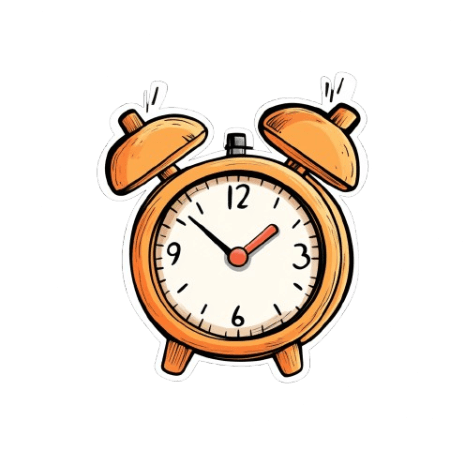
Alarms & To Do Lists
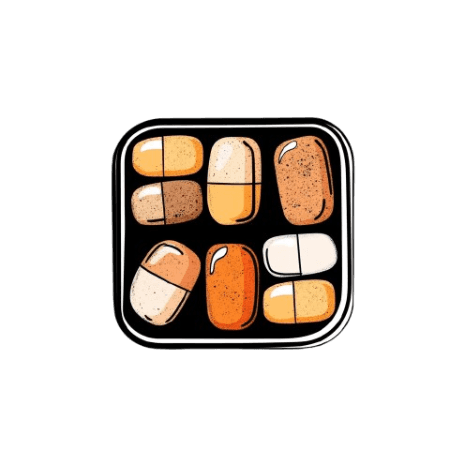
Pill Organizers

Health Mobile Apps
Doesn’t connect to care team
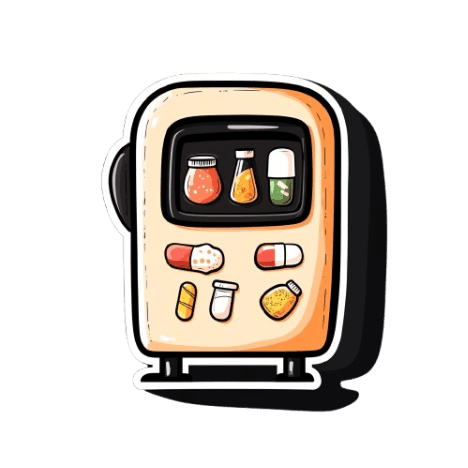
Pill Dispensers
Complex setup & maintenance
Competitor Analysis
Competitor analysis helped identify gaps and opportunities in existing competitor as well as present day alternate solutions like pill organizers and automated dispensers.
Interviews with patients, caregivers, & healthcare staff
I engaged with multiple other users in the system to uncover their unique experiences, frustrations, and needs which uncovered invaluable insights across the system.
A single mother managing 10 medication schedules
One conversation, in particular, left a lasting impact. I spoke with a mother managing her son’s severe chronic illness, requiring her to juggle 10 medication schedules daily.
Her story highlighted the overwhelming burden of staying organized, the constant fear of making mistakes, and the lack of tools designed to ease this journey.
These critical insight shaped the design direction, ensuring the solution was not just functional but empathetic to the real challenges users face.
INSIGHTS & GOAL
Uncovered pain points
Patient insights
Based on previous research research and stakeholder conversations, I uncovered four key insights that shaped the design approach:
Hacky solutions win over the manual setup
Patients and caregivers often gravitated toward hacky solutions like alarms or to-do lists to avoid the complexity of manual setup of competitor apps. Simplifying workflows was essential to encourage adoption.
Noise from notifications
The constant flood of mobile notifications leads to fatigue, making important medication reminders less effective. Cutting through this noise required designing alerts that stand out and command attention.
Motivation falls short
Merely hearing about the negative consequences of poor adherence isn’t enough to drive consistent behavior. Patients need engaging and meaningful incentives to stay motivated.
Healthcare staff insights
Based on previous research research and stakeholder conversations, I uncovered four key insights that shaped the design approach:
Poor adherece data leads to estimation and wrong prescription
Healthcare providers often rely on rough estimates from patients due to missing or inaccurate adherence data. This gap limits their ability to deliver precise and personalized treatment plans.

Goal
We aim to improve medication adherence through a solution that simplifies setup, engages patients with motivation, and connects patients and providers by enabling a smooth flow of adherence information to support better care.
BUSINESS CONTEXT
Digging deeper
Scribing & Prescriptions
For Providers
Care Management
For Staff Members
Business & Population Health
For Administrators
Outbound Campaigns
For Marketers
Collaborating across verticals
Collaborating with parallel vertical products to explore the unique personas they served, identifying how existing capabilities could align with our goals.
Prescription data available in provider-side product
During this process, I discovered that the provider-side product was already ingesting valuable patient prescription data—an essential piece of the puzzle for improving medication adherence.
Identifying and prioritizing Jobs-to-be-Done for patients.
Jobs-To-Be-Done
Inspired by the goal, we put together key Jobs to be done, enabling a clear direction and smoother experience for users while aligning with broader product goals.
By focusing on urgency and utilization, I ensured that the new solution seamlessly integrated into the product’s existing workflows.
SOLUTION
Turning insights into action
With clear priorities established, crafting a solution to bring the vision to life.
Medication Reminders
Medication Reminders ensure users never miss a dose by enabling them to create timely, customizable medication reminders.
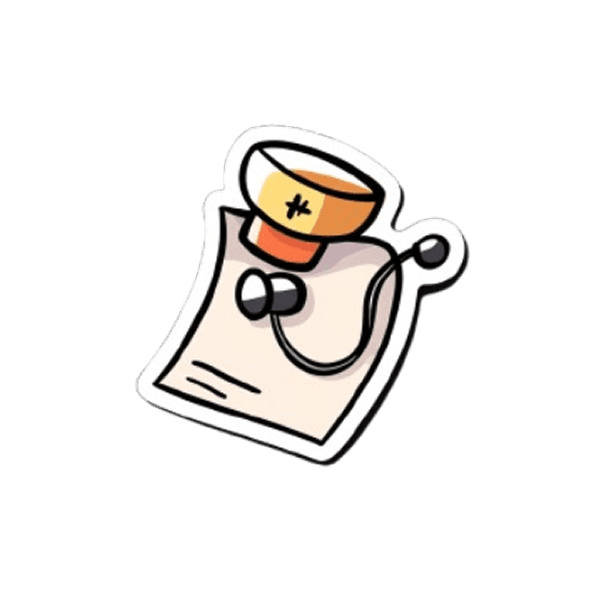


Setup a reminder
Simplified reminders notify users of new prescriptions, with pre-filled details and customizable options for timing, repetition, and dosage, ensuring accuracy and ease of use.
Getting a reminder
Three spaced reminders with a distinct pill bottle rattling sound grab attention, reduce notification fatigue, and create a mental association for taking medication.
GIVE IT A RING!
Logging a medication
Users can tap on a reminder to view important details about the medication and quickly log whether they’ve taken it.
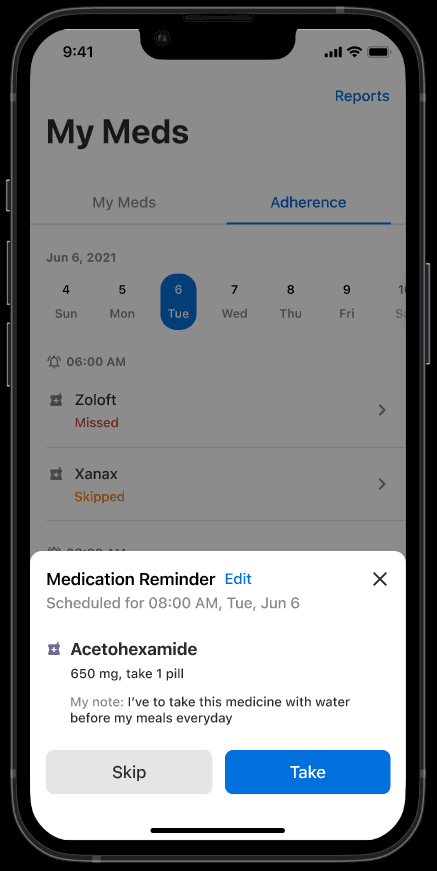
Tracking Skipped Medications
Users can mark medications as skipped, ensuring accurate data for care teams to adjust treatment plans while supporting patients' unique circumstances.
Adherence Report
Adherence Module provides users with a clear, daily overview of their medication schedule. It allows them to review taken, skipped, and missed doses, helping them monitor their progress and maintain consistency.
Adherence Module
Viewing and Sharing a medication adherence report
Meds Tracker
A dedicated card on the homepage tracks adherence performance, celebrating successes and offering encouragement during challenges to keep users on track.
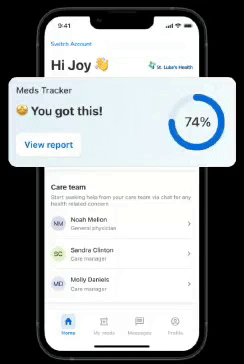
FEEDBACK
Uncovering opportunities through Usability Testing & feedback
User testing and stakeholder feedback revealed key insights into interactions and highlighted areas for improvement.
Setup Still Too Complex
Users found the initial setup screens too technical and difficult to navigate. This created confusion and made the process feel overwhelming for patients and caregivers.
Incomplete Prescription Data
Key medication details were often missing or incomplete in the EHR system. This forced users to manually input information, adding unnecessary effort and frustration.
Missed Timing Insights
Doctors lacked data on whether medications were taken early, late, or on time. This limited their ability to tailor treatment plans and understand adherence habits.
Slow Healthcare System Syncs
EHR systems were too slow to sync new prescriptions in real time. This delay disrupted users’ ability to stay up-to-date with their medication schedules.
ITERATIONS
Refining the Solution
Improving the reminders with a few iterations
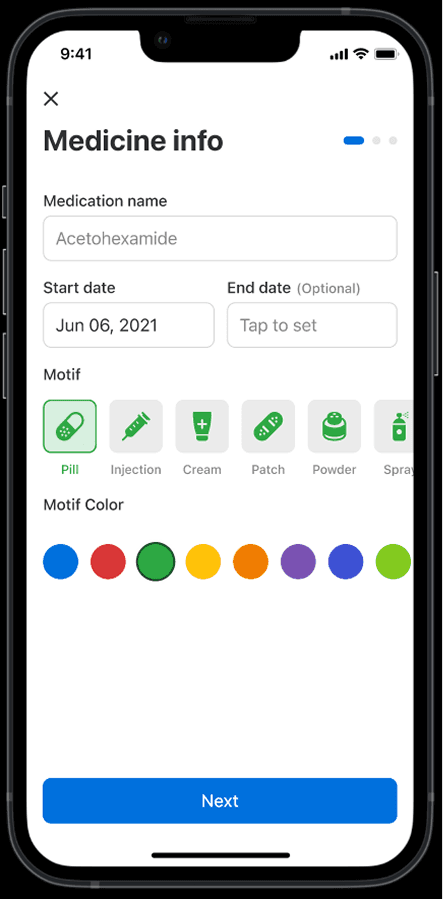
Simplifying Medication Setup with Visual Cues
Unique colors and motifs replaced complex data fields, making medications easier to recognize while simplifying setup, and using the same visuals in reminders helps users quickly associate alerts with the right medication.
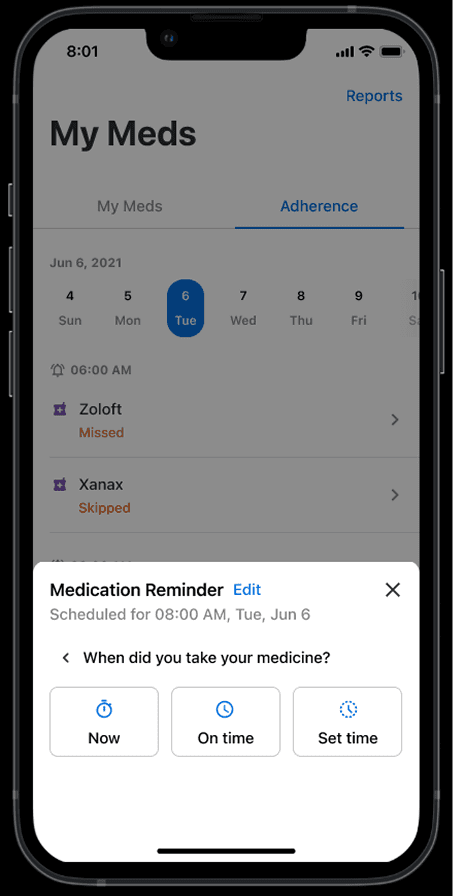
Capturing Medication Timing for Better Insights
Quick actions let users log medication timing, with offset details reflected in reports to support personalized care plans.
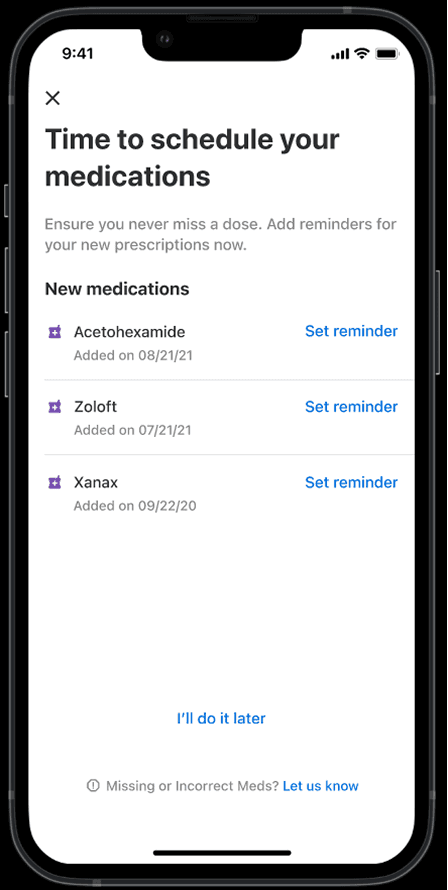
Keeping Medication Data Up-to-Date
Manual 12-hour updates and patient-triggered checks ensure timely and accurate medication information in the app.
IMPACT
Numbers say it all
With the new adherence tool in place, the solutions delivered significant business and user outcomes, addressing the core challenges while achieving remarkable success.
Solving for retention had a spillover effect
Required users to seek approval from their accountability partner before making changes.
42%
Avg. Feature Adoption Rate (3 months)
37%
Boost in Daily Active Users
Driving impact through strategic partnerships
The solution's success fostered strong collaborations with leading healthcare organizations, expanding its reach and influence.
LEARNINGS
Key takeaways from the project
Working on InConnect provided valuable insights into the delicate balance of design, user behavior, and business needs.
Here are two key lessons I took away from this project:
Work around constraints
Creative solutions can thrive within constraints, delivering on both business and user outcomes despite technical challenges.
Listen and adapt
Stakeholder feedback uncovered critical gaps and shaped solutions that met user needs while supporting broader goals.

























